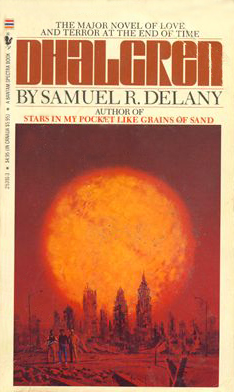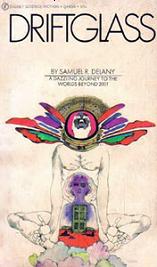
Dantalian no Shoka is a 2011 well written weird mystery anime series with a decidedly bookish bent, set in the nineteen twenties. It stars an ex-World War i fighter pilot who inherits his grandfather’s title and estate, but in return has to take care of his mystical library, which this being an anime, comes in the form of a gothic lolita girl called Dalian. I’ve been watching it off and on for the last couple of days and episode four was a particular delight. Not only was it basically an adaptation of Misery, with a deranged fan keeping a writer prisoner, killing him each day to motivate him to write the proper ending to his trilogy, there was also the shipping war between her and Dalian about which of the characters should end up with whom and as the icing on the cake, a shoutout to Delany right at the start of the episode. Which you just don’t expect to see in an anime, even such a literary one.

